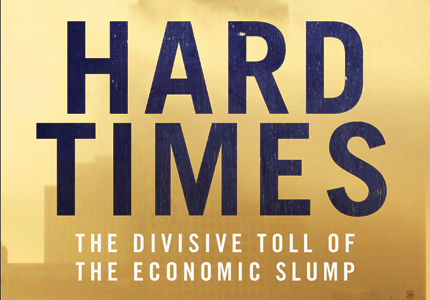Tomorrow’s Modern Design of the World’s Fairs
 Everything can be modernized: this is an idea that came close to being a “dogma” in the 1930s. Architecture, businesses, and infrastructure could progress, but so could corporate branding, family life, and even the human body. The push to advance socially and technologically is familiar today, but it had a particular resonance during the Great Depression. Americans saw progress as the antidote to the loss and failure of the decade. The maturing modernist art movement aligned well with the American ideal of progress. So in an effort to revitalize the economy and culture, the federal government worked with designers and marketers to produce a series of World’s Fairs. Designing Tomorrow: America’s World’s Fairs of the 1930s, edited by Robert W. Rydell and Laura Burd Schiavo, not only describes the industrial progress exhibited at the fairs but also explores the social impact of the urge to update.
Everything can be modernized: this is an idea that came close to being a “dogma” in the 1930s. Architecture, businesses, and infrastructure could progress, but so could corporate branding, family life, and even the human body. The push to advance socially and technologically is familiar today, but it had a particular resonance during the Great Depression. Americans saw progress as the antidote to the loss and failure of the decade. The maturing modernist art movement aligned well with the American ideal of progress. So in an effort to revitalize the economy and culture, the federal government worked with designers and marketers to produce a series of World’s Fairs. Designing Tomorrow: America’s World’s Fairs of the 1930s, edited by Robert W. Rydell and Laura Burd Schiavo, not only describes the industrial progress exhibited at the fairs but also explores the social impact of the urge to update.
To designers committed to thinking in grandiose terms, the human body, especially the female body, could be “improved” just like transportation or kitchens. Mostly, the fairs emphasized that physical improvement would result from revising the way the American citizen lived, from assembly-line kitchens to comfortable, spacious living rooms that were easier for working mothers to clean. The single-family model homes highlighted the idealization of the American family during the Great Depression. The human body, however, could also be “streamlined.” Raymond Lowey, who designed an exhibit at the 1939 New York World’s Fair, suggested that fashion could not fail the human form, but the human form could fail to conform to fashion’s ideals. He hoped that “eugenic selection” in the near future would “aesthetically correct” the female figure. Technology would change people, not the other way around: the main slogan of the 1933 Chicago World’s Fair was “Science Finds—Industry Applies—Man Conforms.”
The racism demonstrated during the fairs inevitably demanded an unanticipated form of progress: stirrings of the civil rights movement. For the most part, the 1930s fairs “seemed designed to reinforce prevailing racial stereotypes.” At the Texas Centennial Exposition in Dallas refused to allow African-American architects to design its Hall of Negro Life, resulting in tall hedges meant to isolate the building and interiors painted in “garish hues” the designers believed representational of African-American taste. Public protest forced the designers to repaint, and African-American artist Aaron Douglas was able to compose four modernist murals that repositioned African Americans in both U.S. history and progress. Political circumstances also forced legislation banning discrimination in fairground hiring policies to pass. The World’s Fairs’ planners, as they sought to be the improving force in society, found themselves faced with an unexpected form of social advancement.


